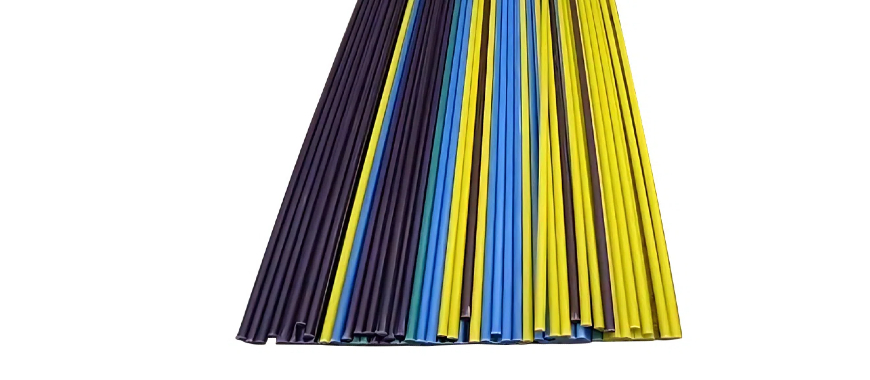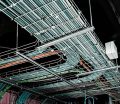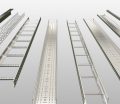
G10 fiberglass rods are an essential component in many industrial and commercial applications due to their exceptional strength, durability, and resistance to environmental factors. These rods, made from layers of fiberglass cloth combined with epoxy resin, are known for their superior performance in demanding conditions. Their lightweight nature and high tensile strength make them a preferred choice for industries ranging from construction to aerospace.
In this blog, we will explore the unique properties of G10 fiberglass rods, highlighting their significance across various uses. Additionally, we’ll delve into their benefits, common applications, and why they stand out among other materials. Whether you’re looking for reliable solutions or innovative designs, G10 fiberglass rods offer unparalleled versatility and dependability.
What is G10 Fiberglass Rod?
Definition and Composition of G10 Material
G10 fiberglass is a high-performance composite material that falls under the category of high-pressure laminates. It is created through a meticulous manufacturing process where multiple layers of woven fiberglass cloth are saturated with epoxy resin. These layers are then stacked and subjected to intense heat and pressure to form a dense, solid laminate.
The combination of fiberglass cloth and epoxy resin gives G10 its outstanding properties. The fiberglass layers provide remarkable tensile strength, impact resistance, and dimensional stability, while the epoxy resin enhances adhesion, water resistance, and chemical resistance. This synergy results in a material that is lightweight yet incredibly strong and durable.
Historical Background and Development
The origins of G10 date back to the mid-20th century when engineers sought to create a composite material with enhanced mechanical and thermal properties. Initially developed for electrical and mechanical applications, G10 quickly gained popularity for its versatile performance across industries. Over time, the introduction of the G10 fiberglass rod expanded its applications further, providing a cylindrical form ideal for specialized needs, such as structural supports and insulators.
Epoxy Sheets for Durable Industrial Applications
Properties of G10 Fiberglass Rods
Mechanical and Physical Characteristics
The G10 fiberglass rod is renowned for its superior mechanical and physical properties, making it a versatile solution for industrial, mechanical, and structural applications. These rods are engineered to perform reliably under extreme conditions, delivering consistent results across various industries.
- Tensile Strength: The tensile strength of G10 fiberglass rods is an impressive 40,000 psi. This ensures that the rods can withstand significant pulling forces without breaking, making them ideal for load-bearing applications.
- Compressive Strength: With a compressive strength of 65,000 psi, these rods can endure substantial pressure, which is crucial in structural and support roles.
- Flexural Strength: A flexural strength of 75,000 psi allows G10 fiberglass rods to resist bending forces effectively, offering durability under dynamic loads.
- Bond Strength: At 2,200 psi, the bond strength highlights the robust adhesion of the fiberglass layers and epoxy resin, contributing to the material’s overall integrity.
FRP Epoxy Sheet: The Ideal Solution for Corrosion Resistance
Impact and Durability
- Shear Strength: The rods exhibit a shear strength of 19,000 psi, ensuring resistance to sliding forces that could compromise their structural integrity.
- Hardness: Rated at 110 on the M scale, the g-10 fiberglass rods possesses a high degree of surface hardness, making it resistant to wear and tear during use.
- Specific Gravity: With a specific gravity of 1.8, these rods strike a balance between lightweight construction and structural strength, which is critical in aerospace and automotive applications.
- Izod Impact Strength: At 14.00 at 49°C, G10 fiberglass rods can absorb considerable impact energy, ensuring resilience in demanding environments.
Environmental and Thermal Properties
- Flammability Rating: The material has a flammability rating of 94HB, indicating its resistance to burning under controlled conditions, which adds a layer of safety in specific applications.
- Maximum Temperature: G10 fiberglass rods can operate effectively up to 140°C (284°F), making them suitable for high-temperature environments.
- Water Absorption: With a low water absorption rate of 0.11% over 24 hours, the rods are resistant to moisture, ensuring their stability in humid or wet conditions.
Finished Fiberglass Sheets for Superior Durability and Strength
Versatility and Application Relevance
The combination of these properties makes the G10 fiberglass rod a standout material in fields requiring a balance of strength, durability, and environmental resistance. Whether used in structural supports, high-performance equipment, or electrical insulation, its properties ensure long-term reliability.
Applications for G10 Fiberglass Rods
Electrical Insulators
The G10 fiberglass rod is widely used in electrical systems as an insulator due to its exceptional dielectric properties and resistance to moisture and heat. It provides reliable performance in high-voltage environments, making it ideal for transformers, switchgear, and other electrical equipment. Its ability to maintain stability under electrical stress ensures safety and efficiency in industrial and commercial setups.
Jigs and Fixtures for Precision Work
Manufacturers rely on G10 fiberglass rod products for creating jigs and fixtures used in machining and assembly processes. The material’s rigidity and lightweight nature allow for precise positioning and support of components without warping. It is commonly employed in aerospace and automotive industries where accuracy is critical to ensure consistent production quality.
Printed Circuit Boards and Test Boards
G10 material is a staple in the electronics industry, particularly in printed circuit boards (PCBs) and test boards. While G10 sheets are more prevalent for PCB substrates, G10 fiberglass rods are used for structural supports and spacers within electronic assemblies. Their non-conductive nature and thermal stability ensure the integrity of sensitive electronic components.
Medical Diagnosis Equipment
The non-toxic and chemically resistant properties of G10 fiberglass rod products make them suitable for use in medical diagnosis equipment. These rods are often integrated into imaging devices, diagnostic tools, and laboratory machinery. Their durability and precision help maintain reliable operation in sterile environments.
Aerospace Applications: Rocket Cases and More
G10 fiberglass rods are valued in the aerospace sector for their strength-to-weight ratio and resistance to extreme temperatures. They are used in rocket cases, structural components, and other aerospace applications where performance and weight savings are crucial. Their ability to withstand vibration and thermal stresses ensures reliability during demanding operations.
Knife Handles and Firearm Grips
The G10 fiberglass rod is a favorite material for crafting knife handles and firearm grips. Its toughness, moisture resistance, and ability to be machined into detailed patterns make it ideal for creating ergonomic, durable, and aesthetically pleasing grips. The material also absorbs impact effectively, enhancing user safety and comfort.
Marine Industry: Boating Applications
In the marine industry, G10 fiberglass rods are employed in various boating applications, including mast supports, rudder shafts, and deck fittings. Their resistance to saltwater, UV exposure, and corrosion ensures long-lasting performance in harsh marine environments. Additionally, their lightweight construction makes them an excellent choice for reducing overall boat weight without compromising strength.
Advantages of Using G10 Fiberglass Rods
High Strength and Versatility
- Exceptional Tensile Strength: The G10 fiberglass rod offers superior tensile strength, making it ideal for applications requiring durability and resistance to mechanical stress.
- Wide Range of Applications: Its versatility allows it to be used across industries, including aerospace, marine, electronics, and construction, ensuring that it meets diverse performance needs.
Excellent Electrical Properties and Chemical Resistance
- Superior Insulation: The G10 fiberglass rod is a highly effective electrical insulator, ensuring safety and reliability in high-voltage and sensitive electronic environments.
- Resistance to Chemicals: Its epoxy and fiberglass composition make it highly resistant to various chemicals, preventing degradation in corrosive environments like industrial plants and marine settings.
Suitable for Cryogenic Applications
- Performance in Extreme Cold: The G10 fiberglass rod maintains its strength and stability in cryogenic conditions, making it suitable for specialized uses in cold storage facilities, aerospace, and scientific equipment.
Low Moisture Absorption
- Protection Against Moisture Damage: With low water absorption, the G10 fiberglass rod resists swelling, warping, and deterioration caused by exposure to humid or wet environments, ensuring long-term reliability.
Resistance to Radiation, Low Cold Creep, and Thermal Shock
- Radiation Shielding: The G10 fiberglass rod performs well in environments with radiation exposure, maintaining its structural integrity and insulation properties.
- Thermal Shock Resistance: Its ability to handle sudden temperature changes without cracking or deforming makes it an excellent choice for high-temperature or rapidly cooling applications.
- Low Cold Creep: This property ensures the rod maintains its shape under continuous stress in cold environments, providing dependable performance.
Dimensionally Stable and Long Lifespan, Especially in Interiors
- Durability in Interior Applications: Especially in indoor settings, the rod provides a long-lasting solution with minimal maintenance, making it a cost-effective choice for industries prioritizing longevity. To enhance this durability, applying fiberglass rods grease can further protect the rod, reducing friction and preventing potential damage. This lubrication ensures that the rod operates smoothly over time, minimizing the need for frequent maintenance.
- Stability Over Time: The G10 fiberglass rod resists warping, shrinking, and environmental wear, maintaining its dimensional accuracy over its lifespan.
Comparison: G10 Fiberglass Rod vs. Other Materials
| Property | G10 Fiberglass Rod | FR-4 | G11 |
|---|---|---|---|
| Flame Retardant | Non-flame retardant | Flame retardant | Non-flame retardant |
| Mechanical Strength | High tensile, flexural, and compressive strength | Slightly lower than G10 in mechanical strength | Superior to G10 in extreme conditions |
| Electrical Insulation | Excellent | Excellent | Higher insulation at elevated temperatures |
| Thermal Resistance | Operates effectively up to 140°C (284°F) | Operates effectively up to 140°C (284°F) | Operates effectively up to 220°C (428°F) |
| Water Absorption | Low (0.11%) | Low (0.10%) | Low (similar to G10) |
| Cost | Cost-effective for general use | Slightly more expensive due to flame resistance | More expensive than G10 |
| Common Applications | Structural supports, jigs, knife handles, boating | Printed circuit boards, electrical enclosures | Aerospace, high-temperature electrical systems |
Fabrication and Handling of G10 Fiberglass Rods
Tips for Machining and Cutting G10 Fiberglass Rods
Fabricating G10 fiberglass rod requires precision and attention to detail, as the material’s high strength and rigidity can pose challenges during machining. Here are some essential tips:
- Choose the Right Cutting Tools: Use carbide-tipped or diamond-coated tools, as they are designed to handle the abrasive nature of fiberglass and prevent rapid wear.
- Slow and Steady Feed Rates: Applying a controlled feed rate during cutting and machining prevents overheating and minimizes chipping along the edges.
- Coolant Application: Utilize water or air-based coolants to reduce heat buildup and extend the life of both the tools and the G10 fiberglass rod.
- Minimize Dust Exposure: Cutting and machining G10 rods generates fine fiberglass dust, which can irritate the skin and respiratory system. Always use dust extraction systems and wear personal protective equipment, including masks and gloves.
Required Tools and Techniques for Best Results
The proper tools and methods are critical for achieving precise results when working with G10 fiberglass rod:
- Drills and Saws: For drilling, use sharp carbide-tipped drill bits to avoid cracking or splintering. Band saws with fine-toothed blades are ideal for cutting, as they provide clean edges and reduce material waste.
- Milling Machines: CNC milling machines offer the best results for intricate shaping or creating detailed patterns on G10 rods. They ensure consistency and accuracy for high-precision applications.
- Grinding and Finishing: To achieve a smooth surface, use fine-grit sanding belts or wheels designed for fiberglass. Avoid excessive pressure to prevent damaging the rod.
- Workpiece Stabilization: Secure the G10 fiberglass rod firmly in place during machining to prevent vibration, which can lead to uneven cuts or tool damage.
Purchasing G10 Fiberglass Rods
Where to Buy G10 Fiberglass Rods
When purchasing G10 fiberglass rod, it is essential to choose reliable suppliers who offer high-quality products tailored to your specific needs. Various vendors specialize in fiberglass materials, ensuring availability in diverse sizes, colors, and quantities.
- GangLong Fiberglass: As a trusted supplier, our brand GangLong Fiberglass provides top-grade G10 fiberglass rod options for industrial, commercial, and custom applications. Our products are manufactured to meet the highest standards of durability, precision, and performance, catering to industries ranging from aerospace to marine.
- Specialty Stores and Online Marketplaces: Specialized stores and online platforms offer G10 fiberglass rod products in a variety of specifications. Look for suppliers with positive reviews, detailed product descriptions, and support for custom orders to ensure the best purchase experience.
- Bulk Suppliers for Industrial Needs: For large-scale applications, consider bulk purchasing from industrial suppliers. These vendors often provide discounted rates and additional customization options, such as unique diameters or finishes.
FAQS about g10 fiberglass rod
G-10 fiberglass is renowned for its exceptional strength-to-weight ratio. It is a composite material made of woven glass fabric layers bonded with epoxy resin under high pressure and heat, resulting in a lightweight yet incredibly durable product. Its tensile strength typically ranges from 35,000 to 50,000 psi, making it suitable for applications requiring high mechanical strength and resistance to wear. G-10 is also resistant to environmental factors such as moisture, temperature changes, and chemicals, which further enhances its durability. Its strength and resilience make it a popular choice for industrial components, knife handles, electrical insulators, and more.
A G-10 rod is a cylindrical form of G-10 fiberglass. Like G-10 sheets, these rods are made from layers of fiberglass cloth impregnated with epoxy resin. The rod form makes it ideal for applications requiring a strong, durable, and lightweight cylindrical material. G-10 rods are widely used in industries such as aerospace, electrical, and mechanical engineering. Their high dielectric strength, resistance to environmental damage, and mechanical properties make them excellent for insulating materials, bushings, structural components, and custom machining projects. G-10 rods are available in various diameters and lengths to suit different applications.
Fiberglass rods, including those made from G-10, are highly valued for their versatility, durability, and performance in demanding applications. They offer excellent strength, are lightweight, and resist corrosion, moisture, and many chemicals. This makes them suitable for a wide range of uses, such as fishing rods, structural supports, and insulating components. Compared to traditional materials like metal or wood, fiberglass rods are often preferred for their superior resilience and resistance to environmental factors. However, they may not be as stiff as carbon fiber rods, which can be a drawback in some high-performance applications.
G-10 and G-11 fiberglass are both high-performance composite materials, but they differ in their thermal properties. G-10 is optimized for mechanical strength and electrical insulation in standard operating conditions, with a maximum continuous operating temperature of about 140°C (284°F). G-11, on the other hand, is designed for high-temperature applications and can withstand continuous exposure to temperatures up to 220°C (428°F). While both share similar structural properties, G-11 is more expensive and slightly less rigid than G-10 due to its enhanced thermal resistance. Choosing between the two depends on the specific operating environment and temperature requirements of your application.

As the editor of GangLong Fiberglass, I have years of experience and in-depth research, focusing on cable tray products, fiberglass solutions, and grille systems. I incorporate years of industry insights and practical experience into every content, committed to promoting the progress of the industry. At GangLong Fiberglass, my commitment is reflected in every product, from innovative cable trays to durable fiberglass solutions and sturdy grille systems. As an authoritative voice in the industry, my goal is to provide valuable information to professionals and businesses and promote forward-looking solutions.


